KFBG discovers eight plant species newly recorded in Hong Kong
Written by Jinlong Zhang
With the publication of the fourth volume of Flora of Hong Kong (Hu & Wu, 2008) in 2011 and the Check List of Hong Kong Plants in 2012, 2,175 native plant species have been recorded in Hong Kong. Many may think there is not much work left for botanical research, in particular plant taxonomy. In fact, botanists are still describing species new to science and reporting new records for the flora of Hong Kong, even though the SAR is among the most explored areas of the world. For example, more than 40 newly recorded native species or non-native species have been reported by Kadoorie Farm and Botanic Garden (KFBG) alone since 2012.
Recently, botanists from KFBG reported eight newly recorded plant species for Hong Kong, including six native species: Pithraj tree (Aphanamixis polystachya), ellipsoidal Sageretia (Sageretia ellipsoidea), hooked Sageretia (Sageretia hamosa), short-styled star jasmine (Trachelospermum breviculatum), Hainan ginger (Zingiber hainanense), and wavyleaf basketgrass (Oplismenus undulatifolius); and two naturalised species: false moneywort (Alysicarpus ovalifolius) and creeping cucumber (Melothria pendula). The voucher specimens are deposited in the KFBG Herbarium.
Pithraj tree
Wong Chu-kwan, an ecologist at KFBG’s Native Tree Nursery, used to lead teams collecting seeds of native trees throughout Hong Kong. One day in 2020, she discovered a tall, upright tree in Yuen Tun Ha, Tai Po, New Territories. The tree’s pinnate leaves were about half-a-metre long. The arrangement of leaflets was very similar to Hong Kong pencilwood (Dysoxylum hongkengense), but the margins of the leaflets were undulating. After a careful search, she picked up a few bunches of fruits. Each of the fruits was spherical, light green and grape-sized. Some of them had turned yellowish and the fleshy exocarp splits into three valves, revealing a red aril. She and her colleagues collected some seeds and a voucher specimen. The specimen was then passed to the KFBG herbarium and I found it to be a Pithraj tree (Aphanamixis polystachya), a newly recorded species for Hong Kong. The discovery was covered on the KFBG website (KFBG, 2020).

|
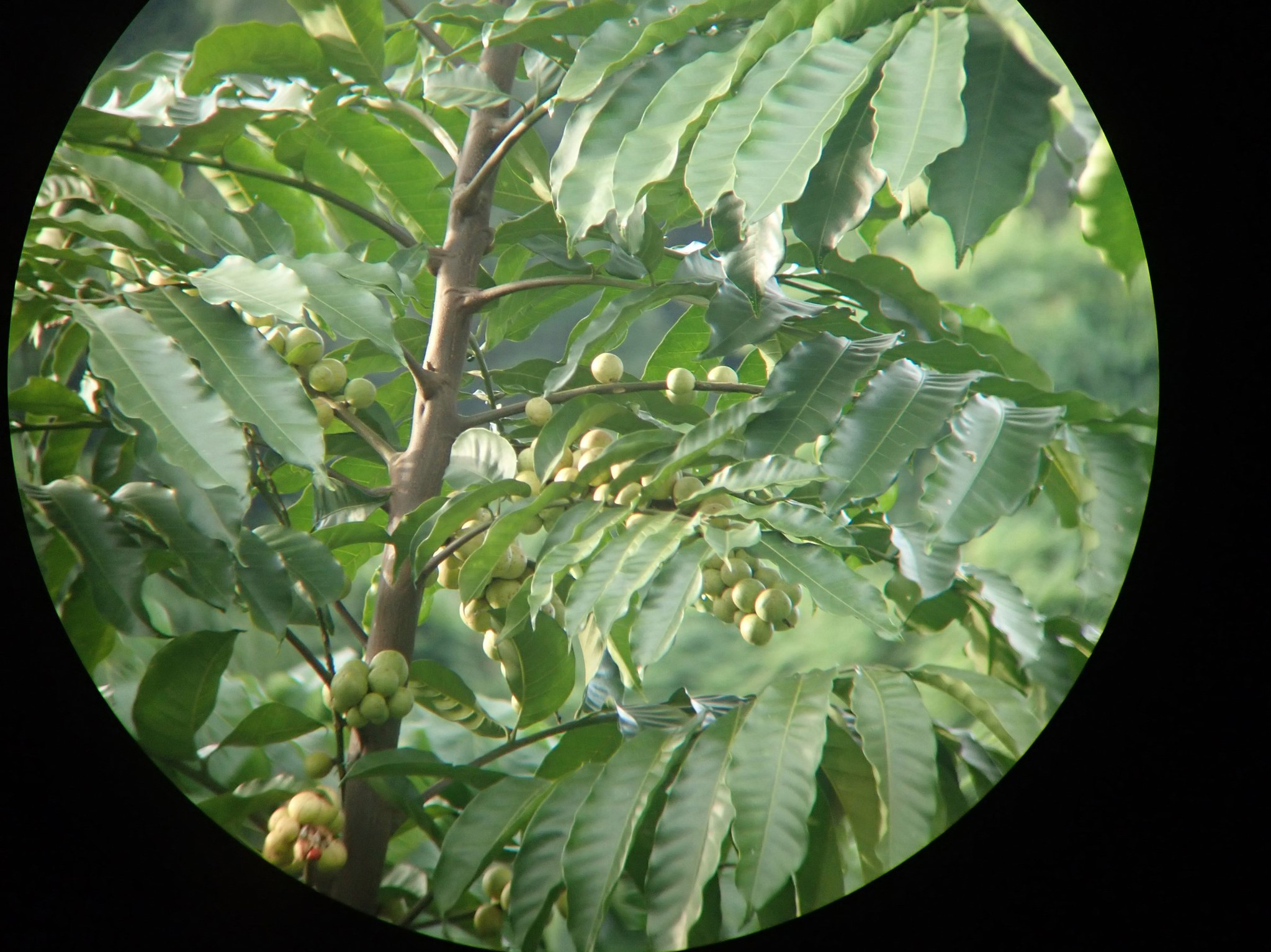 |
Can a blogpost be considered as a scientific report for a newly recorded species? Usually not. To confirm that a species is indeed a new record for a region, apart from having voucher specimens, a scientific research article is needed to report the species’ scientific name, morphology, ecology, place of origin or geographical range, and conservation status. Both voucher specimens and articles will be an important basis for the conservation or management of the newly recorded species.
The Pithraj tree belongs to Meliaceae (mahogany family), under the genus Aphanamixis. It is a tall tree distributed in South China, India, Sri Lanka, Indochina, Indonesia, and as far as Papua New Guinea and the Solomon Islands. In China, it could be found in Fujian, Taiwan, Guangdong, Guangxi, Hainan and Yunnan (Peng H et al., 2008). As a timber wood species, it was widely cut down in the past, hence became rare in many places.
Similar to the Pithraj tree, many species that used to be common in history could be rare at present. Populations of those species may have been isolated from one another and some sub-populations may even have been eradicated from the landscape. For some species, a small number of individuals may survive in less disturbed areas, for example, a fung shui wood or remote and less accessible ravines, if it did not become locally extinct. Most of these species are difficult to find without a dedicated survey of such sites. Finding and reporting these species are important, because if a species has not been recorded for a region, there is no need to talk about its conservation or management.
Hainan ginger
Hainan ginger has a similar story.
At the end of 2020, Dr Jin-gang Liu of the Flora Conservation Department discovered a ginger species he has never seen before along a remote rocky stream on Tai Mo Shan. The plant was 80-100 cm tall with relatively broad leaves, unlike any other species recorded in Hong Kong. He soon realised that this should be a new record for Hong Kong or could even be a species new to science. After extensive research, he confirmed that the plant is Hainan ginger, a species described in 2015 based on specimens from Hainan (Ye et al., 2015). Dr Bai Lin, a botanist who described this species, has confirmed Jin-gang’s identification. According to the description, Hainan ginger is endemic to Hainan Island and is only found at four localities on Diaoluo mountain and Jianfeng mountain. As the range is so narrow, it should be listed as endangered (EN) according to the IUCN Red List Categories and Criteria. Even worse, the voucher specimens of Hainan ginger were collected in 1933 and 1954, respectively, therefore, it is a question whether the species still exists in Hainan today. The newly reported population in Hong Kong not only added a name to the list of plant species for the region, but also showed that the species has a wider range than previously thought and adds hope for its conservation.
Why does a species endemic to Hainan also occur Hong Kong? Was it introduced artificially? Is there a risk of invasion? Are conservation attention and protection needed for this species? Addressing these questions is a key responsibility of botanists, ecologists and conservationists.
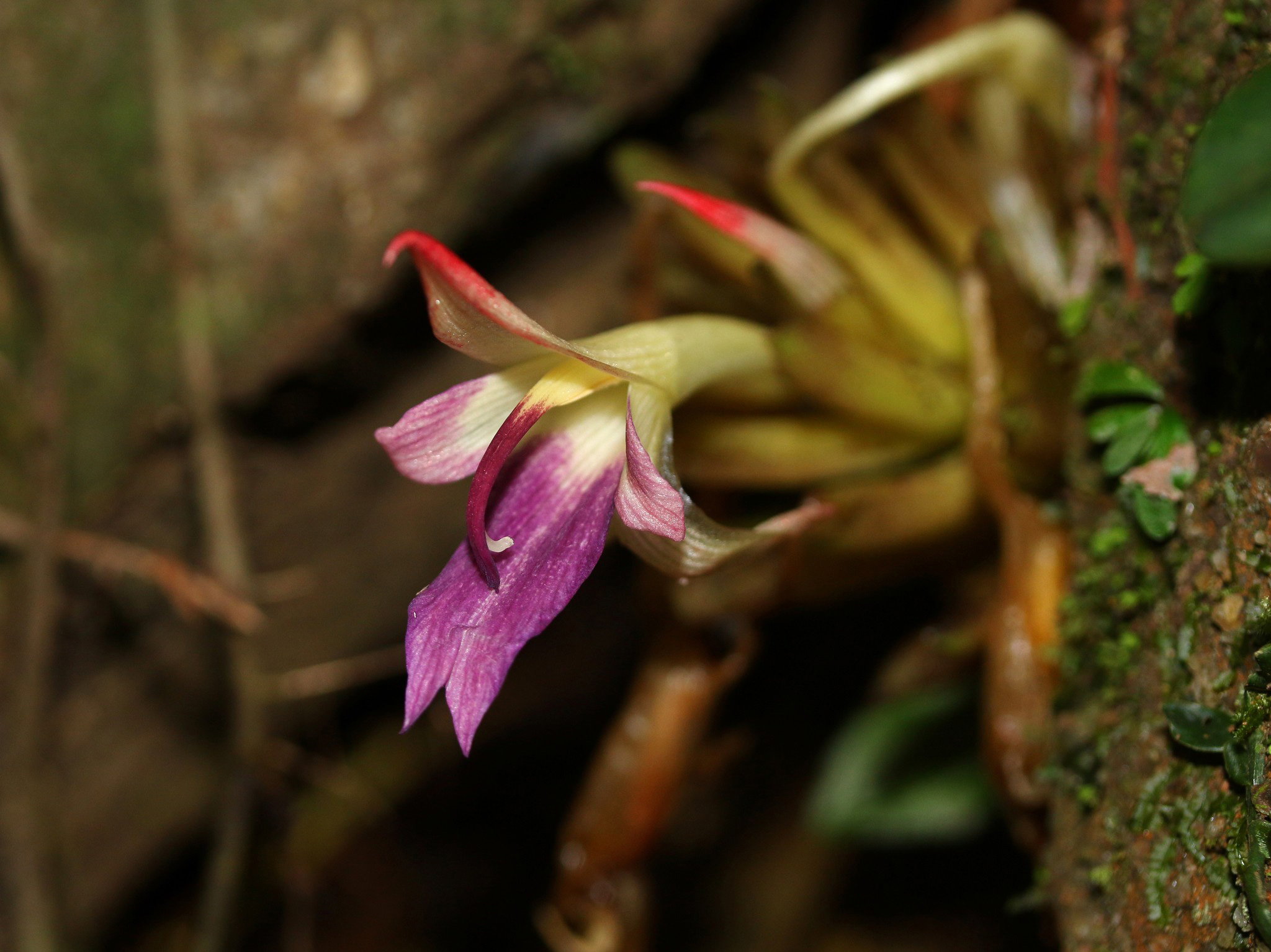
|
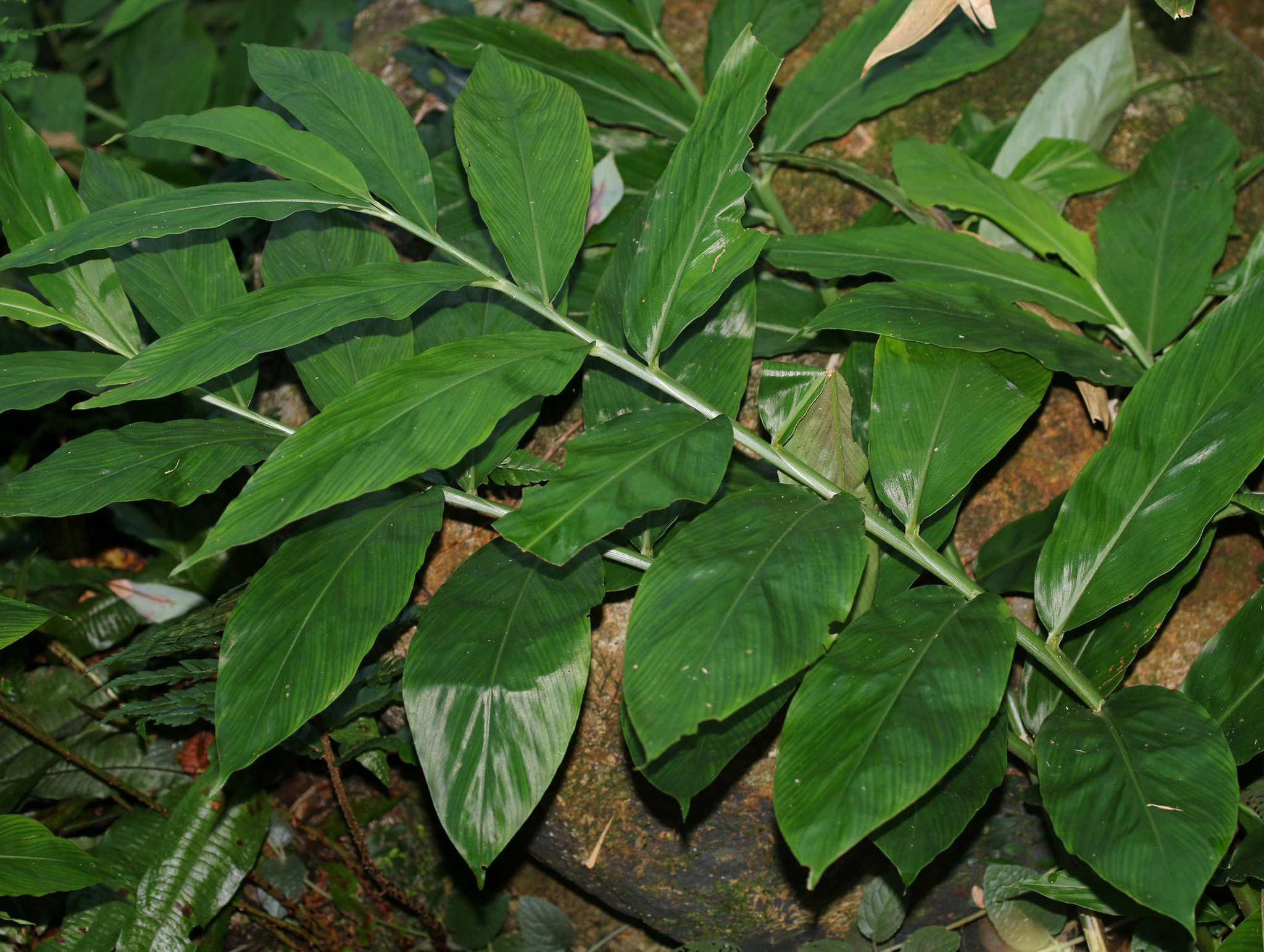 |
It is certain that Hainan ginger is native to Hong Kong. First, no economic or medicinal usage is known for this species and there is no sign that it was cultivated in Hong Kong or in the neighbouring regions. The species grows on high mountains, in less accessible ravines that are seldom visited. Given the associated species in the habitat are also naturally occurring, it is less likely that the ginger was planted by someone in the past. It is also impossible that it was introduced from Hainan after the paper was published. A more reasonable explanation would be that because Hong Kong and Hainan Island share a more or less similar climate and are geographically not far away from each other, they share many species in common. Native species such as Hainan ginger could have been growing on Tai Mo Shan for thousands of years, probably before human settlement. Because the species is restricted to less accessible areas, no herbarium specimen was collected until Jin-gang’s visit. If a herbarium specimen was collected from Hong Kong before the species was described, and if the specimen had been examined by the taxonomist, Hainan ginger may have a different name.
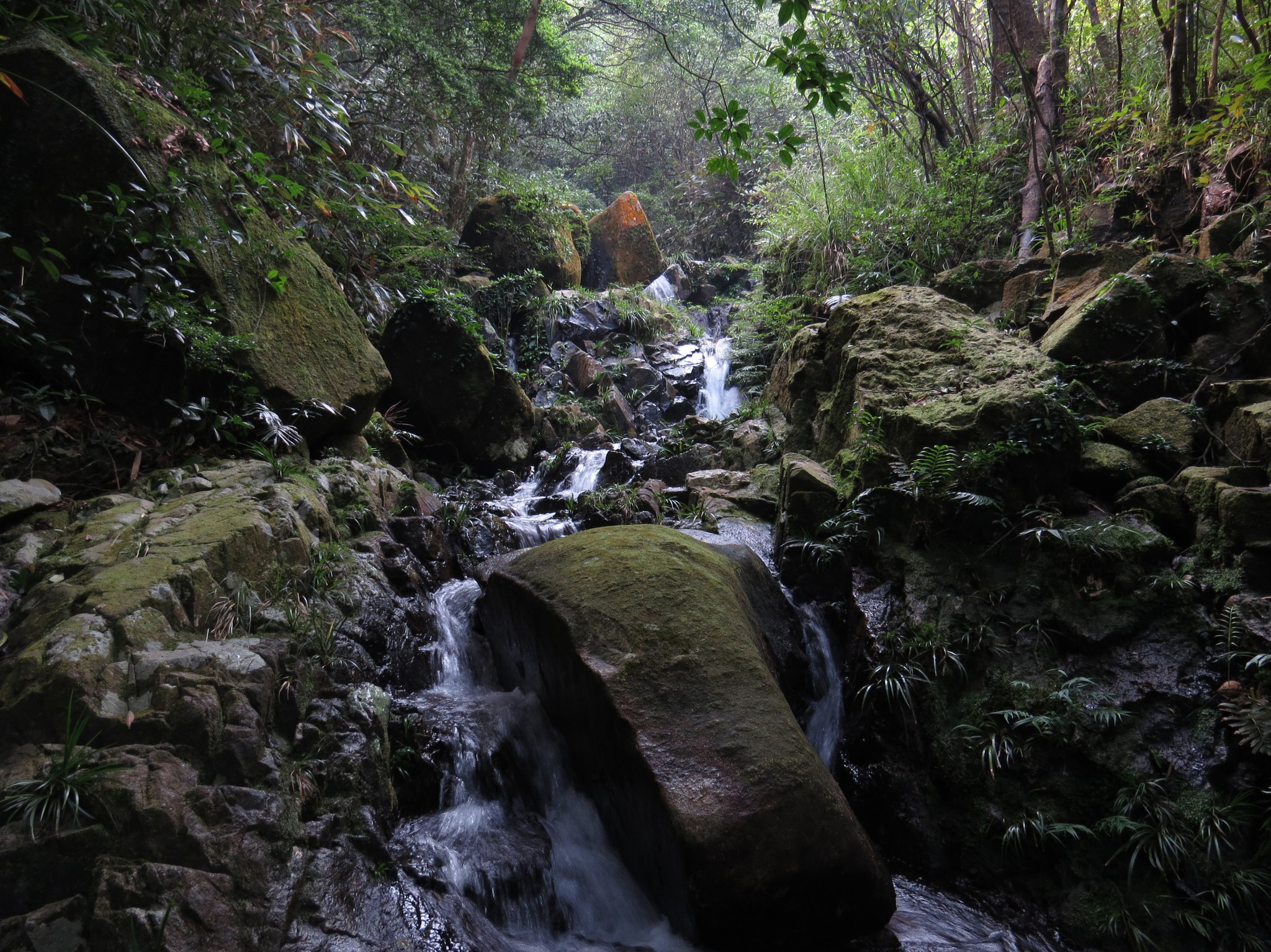
|
Hainan ginger is not the only case. Many plants naturally occurring in Guangdong, Guangxi, Hainan, Taiwan and even Vietnam should also naturally occur in Hong Kong. However, as most of the recently discovered species are so rare and are restricted to less accessible areas, if you don't search for them, you won't have a chance to see and study them.
Ellipsoidal Sageretia
Are all the newly recorded species hiding in less accessible areas? Not really. Some of the newly recorded species may be more common and can be found in country parks with a bit more attention, and some species are even growing on the roadside in villages, sometimes as a weed.
In 2000, Prof. Xing Fu-wu from South China Botanical Garden and Dr Ng Sai-chit of KFBG updated the checklist of seed plants of Hong Kong (Xing et al., 2000), in which the species Sageretia lucida (Rhamnaceae, the buckthorn family) was included. Since then, staff in the Flora Conservation Department have encountered this species in many locations in Hong Kong and have always thought it was "S. lucida". It is noteworthy that although relatively common, this species has never been officially recorded in Flora of Hong Kong, or in the Check List of Hong Kong Plants, or even the HK Plant Database (https://www.herbarium.gov.hk/en/hk-plant-database/index.html) maintained by the Hong Kong Herbarium. In 2021, Dr Yang Yi of Jiangxi Agricultural University, a taxonomist specialising in Rhamnaceae, clarified the identity of the “S. lucida” and described a new species: S. ellipsoidea, (Yang et al., 2021). In his opinion, S. lucida is confined to the limestone hills of Yingde, Guangdong province, and the species previously identified as S. lucida should be a new species S. ellipsoidea (Yang et al., 2021). In this regard, I contacted Dr Yang, and he confirmed that the specimens collected in Hong Kong are indeed S. ellipsoidea. A similar species, hooked Sageretia, was also collected from Tai Mo Shan by Mr Daniel Hang from the Flora Conservation Department. This brings the number of native species to three, namely S. thea, S. ellipsoidea and S. hamosa.

|
Naturalised species
No matter whether a newly recorded species is native or exotic, reporting it in a timely manner is important because the delay in reporting may have consequences, either in terms of conservation or management. Often, the newly discovered native species needs to be reported promptly because it is often under threat, and the naturalised exotic species has to be reported for management purposes.
Creeping cucumber and false moneywort are two exotic species naturalised in Hong Kong. Creeping cucumber (Melothria pendula) is a herbaceous vine of the family Cucurbitaceae (the gourd family). It has golden corollas and black fruits when ripe. It is native to the southeastern United States and is toxic to some extent (Vorderbruggen, 2006). The voucher specimens for this species were collected by Jin-gang in 2017 from Peng Chau and Lantau Island, where it grows on wasteland. Another exotic plant, Alysicarpus ovalifolius, was found in Nam Wah Po, Tai Po, New Territories, and Fan Lau, Lantau Island, also on wasteland. Compared to invasive plants such as Mikania micrantha and Ipomoea cairica, these exotic species may not cause much damage for the time being, but they still need to be closely monitored because later on some of them could become invasive and produce a variety of hazards.
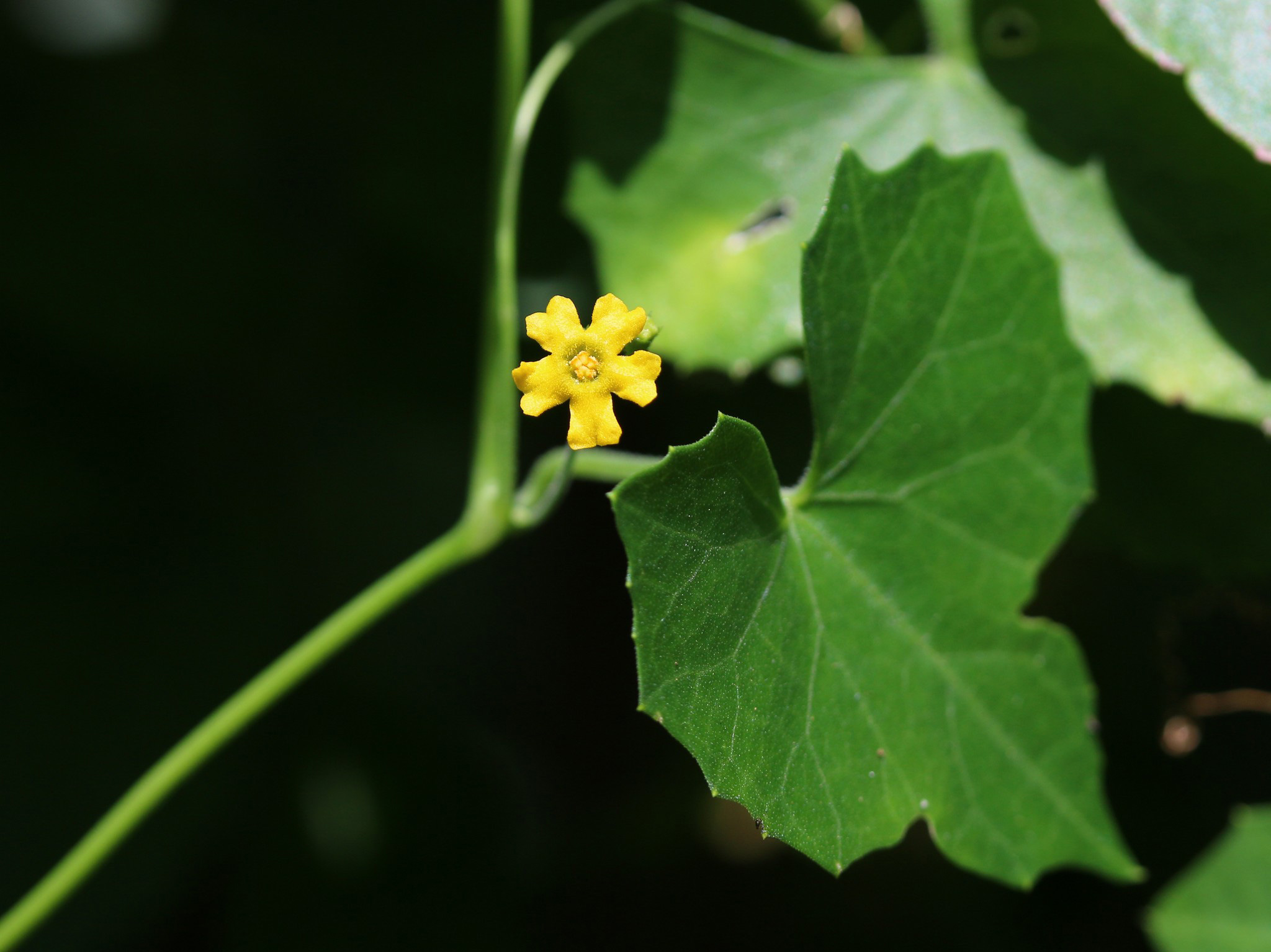
|
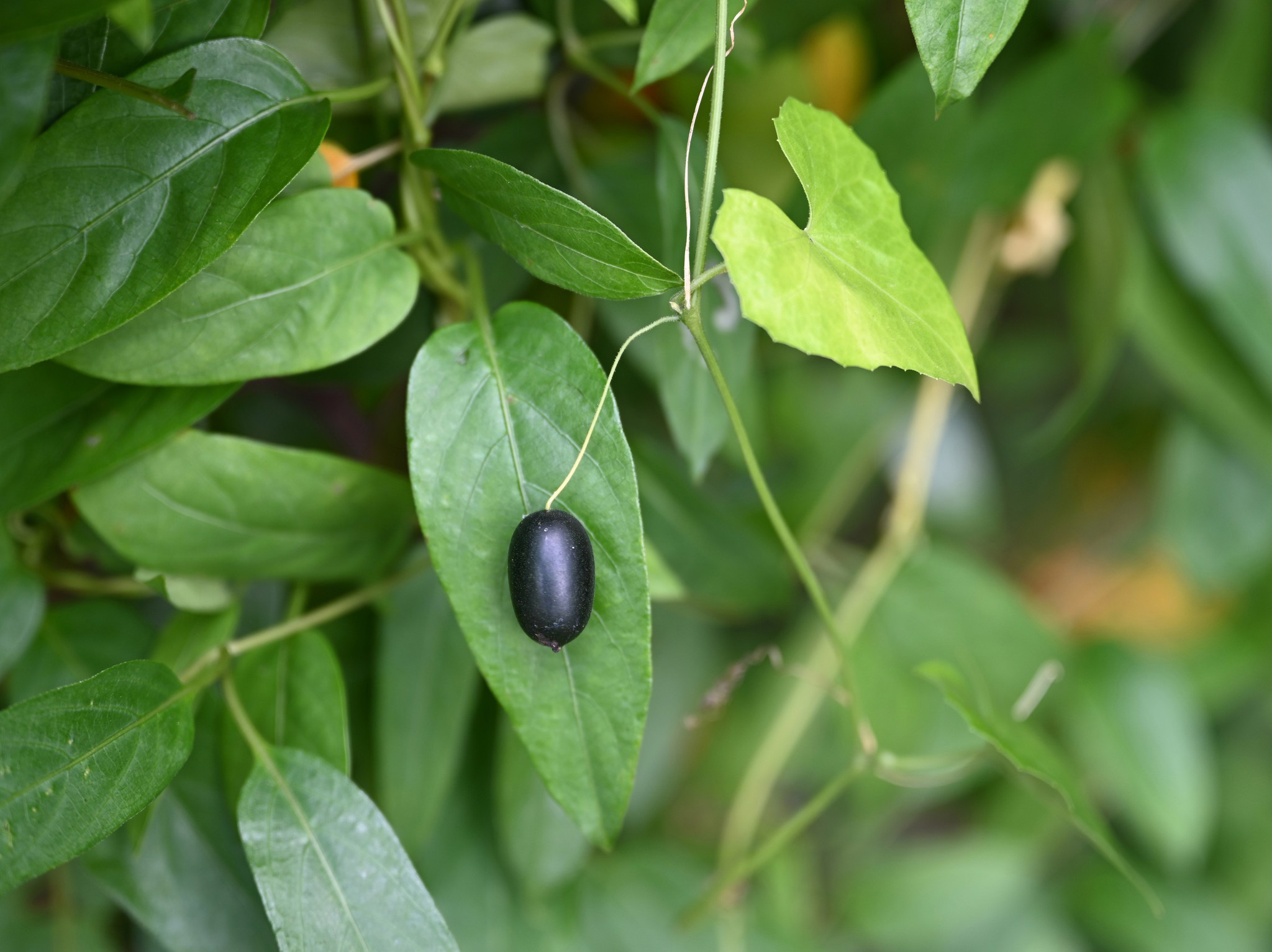 |
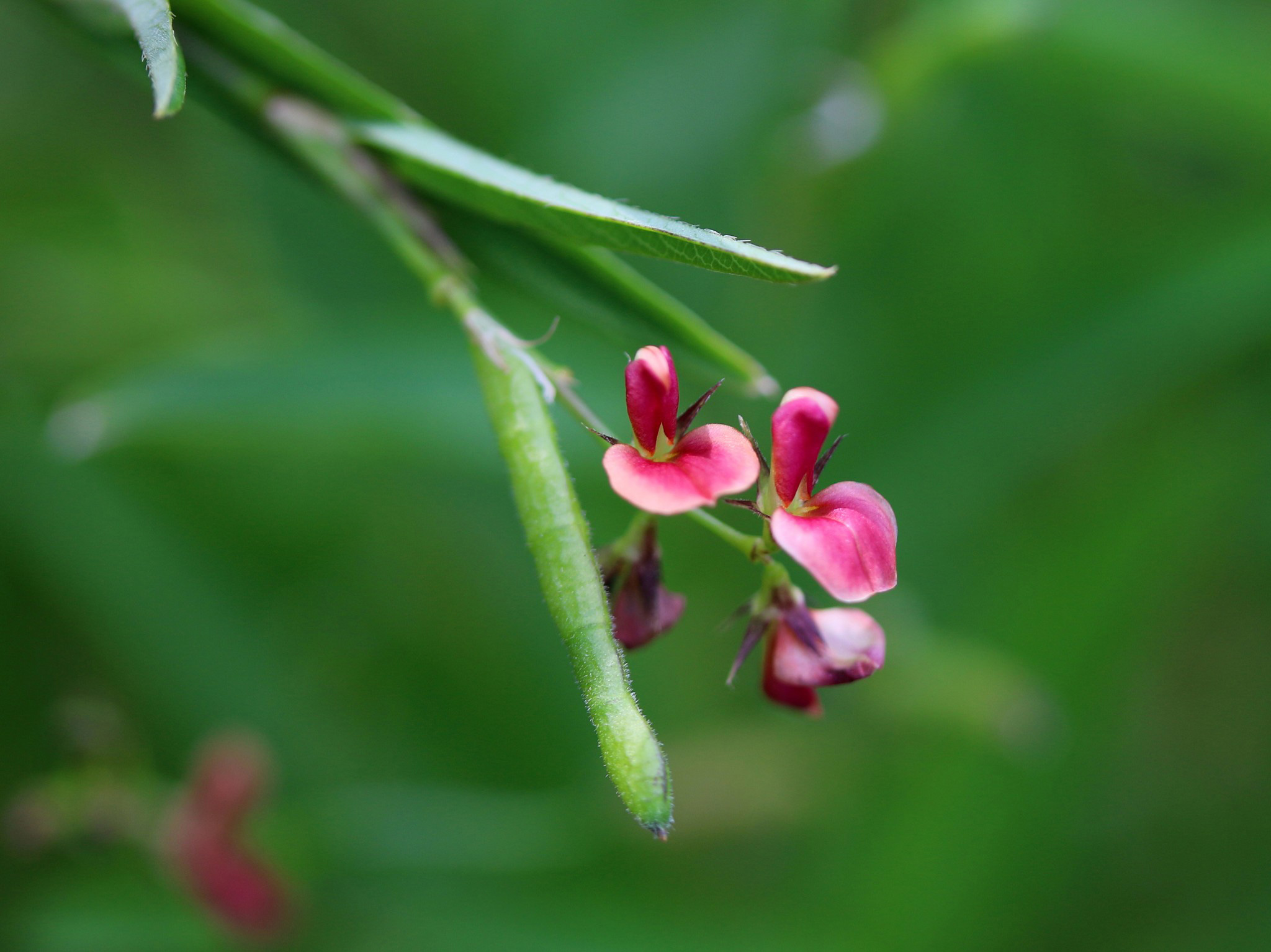
|
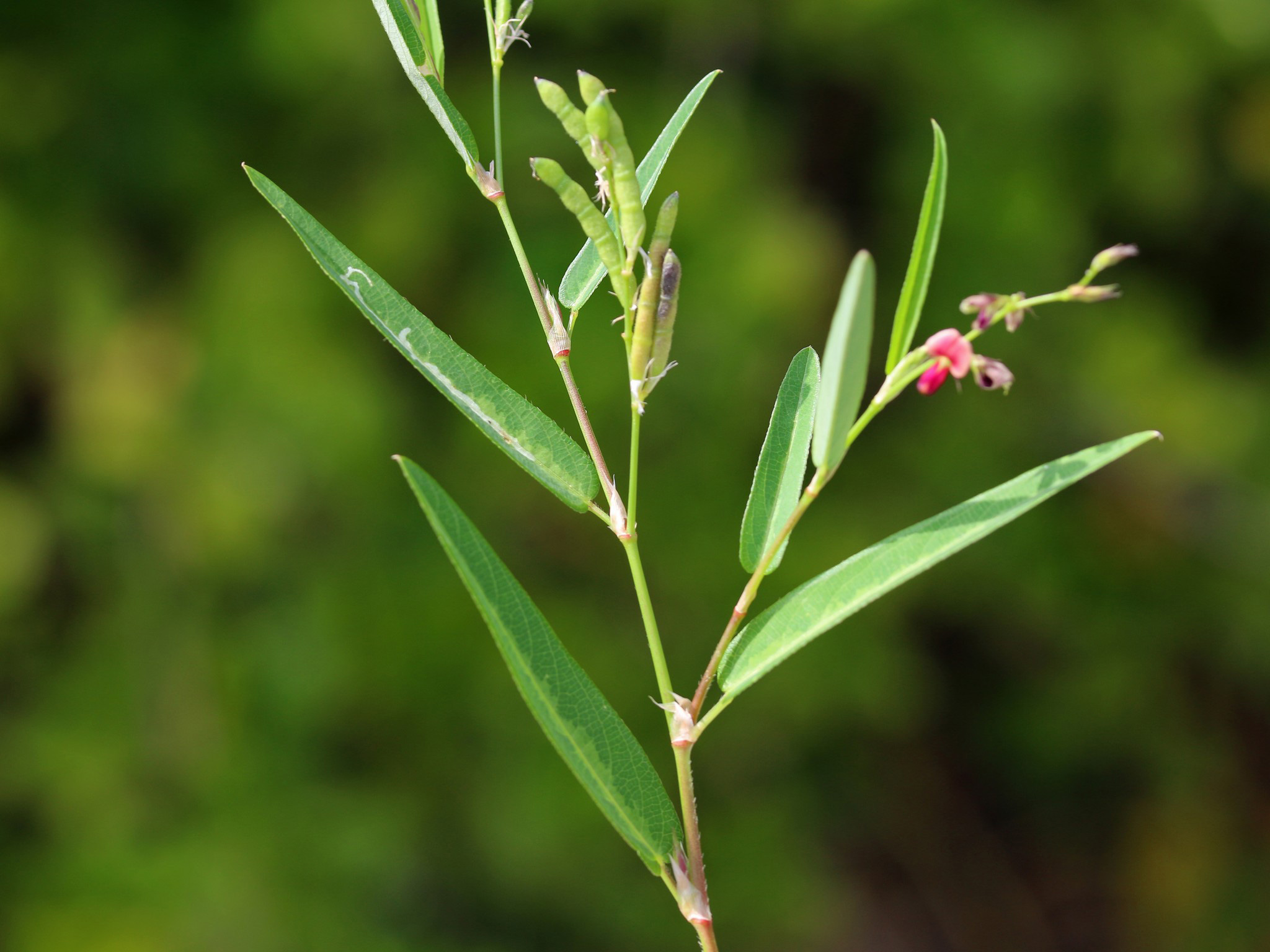 |
New discoveries are yet to be reported
|
Although reporting a species as soon as it is discovered is important, sometimes it may take years until a species can be confirmed and reported in scientific literature. There are several reasons for this. First, it takes time to study the specimens, explore existing literature and write it up, especially as expertise in plant identification and taxonomy has become rare in recent years. Second, some of the voucher specimens may be sterile, and not until specimens with flowers and fruits are collected is it possible to get a confident identification for the species. Third, some species may occur sparsely in various locations and are undercollected, therefore the species’ status cannot be understood until a sufficient number of specimens is collected. The relevant research article reporting these eight will be published in the botanical journal Subtropical Plant Science (Zhu et al., 2023). The first author of the paper, Miss Zhu Hui-ling, an ecologist of the Flora Conservation Department of KFBG, says, "There are still many newly recorded species for Hong Kong yet to be reported. Newly recorded species may become more and more scarce as explorations are more and more extensive, but we will continue to work hard to study and document them so that Hong Kong’s plant biodiversity can be better protected." More information can be found in the research article: Zhu HL, Liu JG, Wong CK, Williams C, Hang KY, Zhang JL & Gale SW(2023). Additions to the Flora of Hong Kong. Subtropical Plant Science, 52.
|
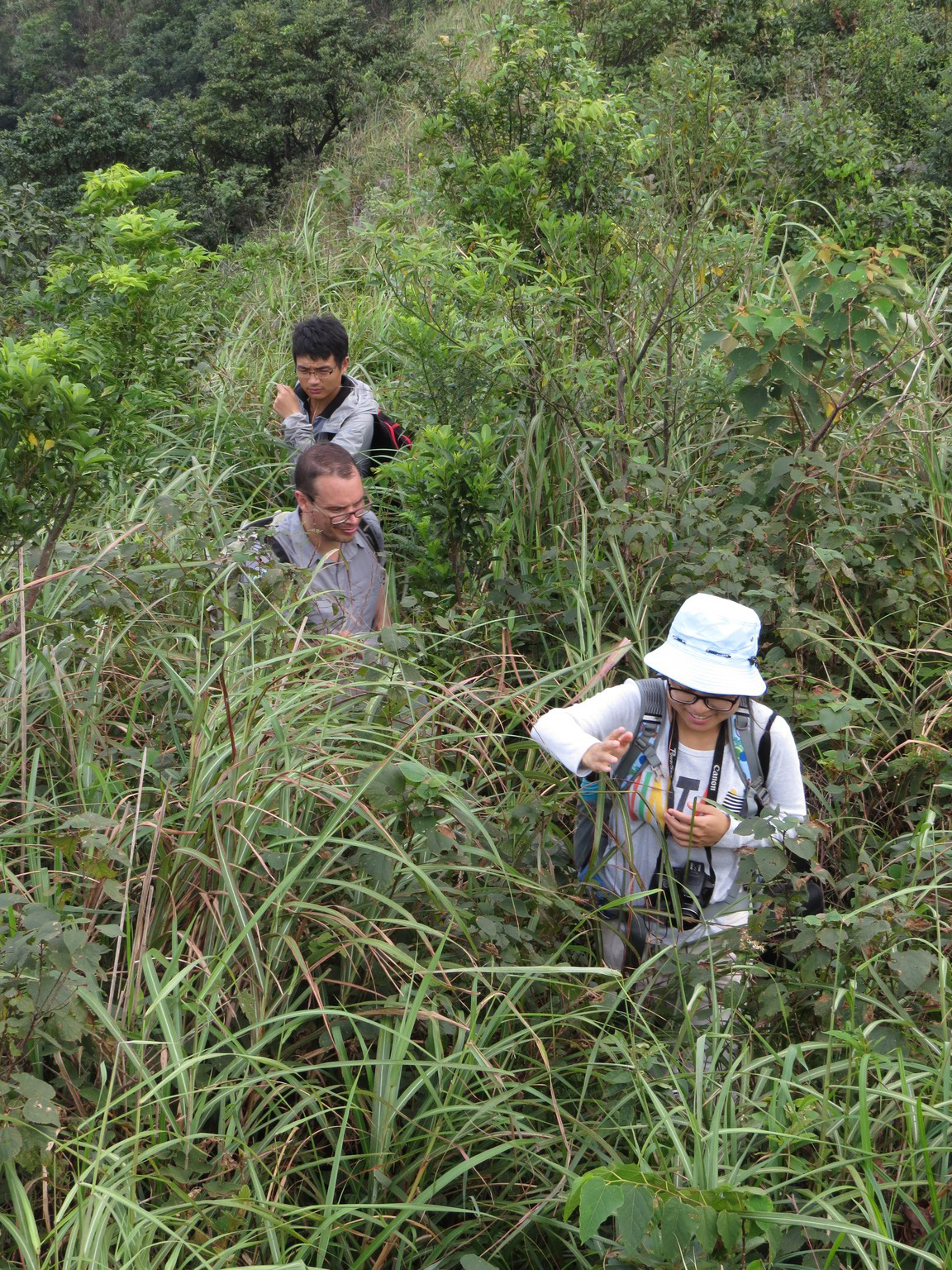
|
References
Hong Kong Herbarium (2012). Check list of Hong Kong plants 2012. Agriculture, Fisheries and Conservation Department.
Hong Kong Herbarium (2023). HK Plant Database.
Hu QM & Wu DL (2008). Flora of Hong Kong. Agriculture, Fisheries and Conservation Department, Government of the Hong Kong Special Administrative Region.
KFBG (2020, November 4). An awesome find to kickstart this fruiting season! Discovery of Aphanamixis polystachya – a new record of a tropical lowland tree species for Hong Kong
KFBG (2023). EXPERIMENTAL FOREST RESTORATION PLOTS.
Law C (2022). HK-1188 橢果雀梅藤 Sageretia ellipsoidea.
Vorderbruggen M (2006). Creeping Cucumber.
Xing FW, Ng SC & Chau L (2000). Gymnosperms and angiosperms of Hong Kong. Memoirs of the Hong Kong Natural History Society, 23, 21–135.
Yang Y, Peng H & Sun H (2021). Taxonomic revision of Sageretia (Rhamnaceae) from China I: Identities of S. lucida, S. thea var. cordiformis and S. yunlongensis, with the description of a new species S. ellipsoidea. PhytoKeys, 179, 13–28.
Ye YS, Bai L & Xia NH (2015). Zingiber hainanense (Zingiberaceae), a new species from Hainan, China. Phytotaxa, 217(1), 73.
Zhu HL, Liu JG, Wong CK, Williams C, Hang KY, Zhang JL & Gale SW(2023). Additions to the Flora of Hong Kong. Subtropical Plant Science, 52.

